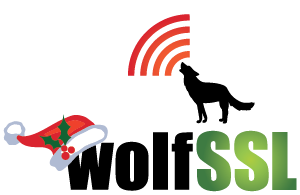We are excited to announce that wolfCrypt now supports the EAX mode of operation for AES! AES EAX is a two-pass authenticated encryption scheme that is optimized for simplicity and efficiency. More details about the algorithm can be found in EAX: A Conventional Authenticated-Encryption Mode, by M. Bellare, P. Rogaway, and D. Wagner. To enable […]
Read MoreMore TagCategory: Uncategorized
Exploring wolfSSL Integration with OpenSC for smart cards
Are you interested in integrating wolfSSL into OpenSC for smart card support? We’ve been pondering this idea as well, especially after hearing from a few customers. But, we’re eager to know if there’s a broader interest out there and would greatly appreciate your feedback. If the prospect of using wolfSSL within OpenSC intrigues you, we’d […]
Read MoreMore TagLive Webinar: FIPS Training
The FIPS Training Webinar returns on October 12th at 10 AM PT, presented by wolfSSL Senior Software Engineer Kaleb. Join us for an exciting opportunity to enhance your understanding of FIPS and gain valuable insights into its implementation from wolfSSL as the current leader in embedded FIPS certificates. Watch the webinar here: FIPS Training Webinar […]
Read MoreMore TagSome Differences Between TLS and SSH
TLS provides end-to-end encryption on one connection. You are routing data in and out from one application. (Note, this application can be a tunneling utility, see Stunnel.) It authenticates the server with a certificate chain of trust going back to a root CA that you implicitly trust to sign identities. It can authenticate the client […]
Read MoreMore TagSeverity HIGH security problem to be announced with curl 8.4.0 on Oct 11
We have notified the distros mailing list allowing the member distributions to prepare patches. (No one else gets details about these problems before October 11 without a support contract and a good reason.) We are cutting the release cycle short and will release curl 8.4.0 on October 11, including fixes for a severity HIGH CVE […]
Read MoreMore TagwolfTPM Policy PCR Sealing
When it comes to edge computing devices, keeping secrets such as encryption keys or identifiable metadata from being tampered with or stolen is of the utmost importance and the TPM is an ideal facility for keeping such secrets. WolfTPM already has facilities for storing secrets to the TPM, but we’ve recently added convenience functions for […]
Read MoreMore TagQuick start to wolfCLU
Newly created container for wolfCLU (wolfSSL’s Command Line Utility) was added to wolfSSL’s repo: https://github.com/wolfSSL/wolfssl/tree/master/Docker/wolfCLU The idea is to be able to quickly get set up and start using the latest wolfCLU in your projects. You can get a prebuilt container from https://hub.docker.com/repository/docker/wolfssl/wolfclu/general or by simply running: docker run -it –rm -v $(pwd):/ws -w /ws […]
Read MoreMore TagOFTP? Yes, We can Help!
Are you part of the Odette automotive networking platform community? Are you already using OFTP? Then we are here to help! As you might know, OFTP requires identity verification via specialized X.509 certificates issued by Odette, but the OFTP protocol depends on the underlying TLS protocol to handle the authentication, encryption and security aspects of […]
Read MoreMore TagLive Webinar: wolfSSL Training
We are thrilled to announce that wolfSSL training webinar is returning on October 5th at 10 AM CET presented by wolfSSL Engineer Daniele. If you are wanting to dive into the insight of wolfSSL embedded SSL/ TLS and expand your knowledge, this is the perfect opportunity. Watch the training today! Part 1 Part 2 Daniele […]
Read MoreMore TagwolfBoot: support for post-quantum secure-boot with LMS/HSS signatures
Do you have a post-quantum secure-boot requirement from the looming CNSA 2.0 timeline? The timeline has stated that post-quantum signature schemes should be used exclusively by 2030, and adoption should begin immediately. To this end, a few months ago we hinted that plans were underway for post-quantum wolfBoot support, and just recently we added post-quantum […]
Read MoreMore Tag
